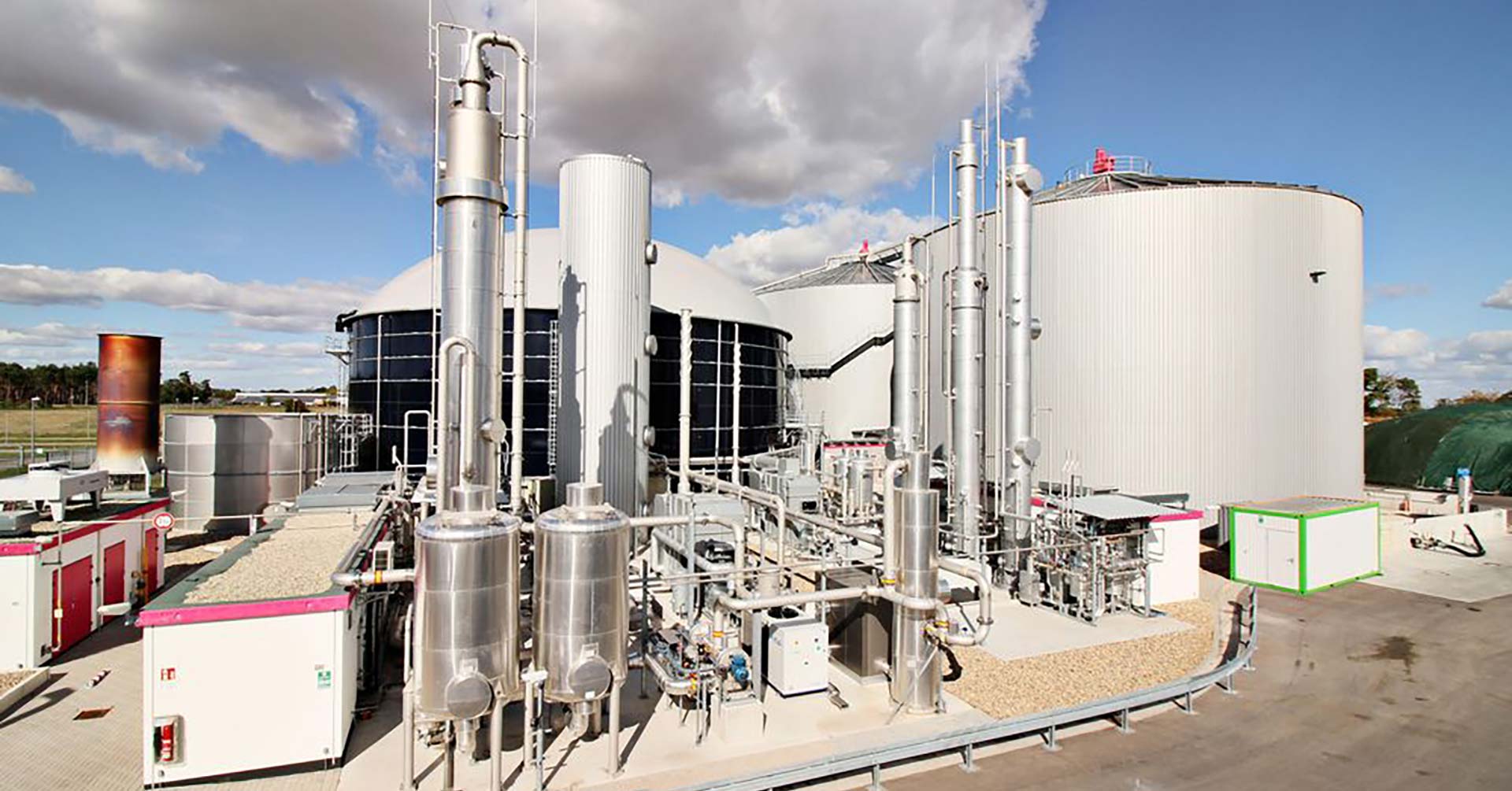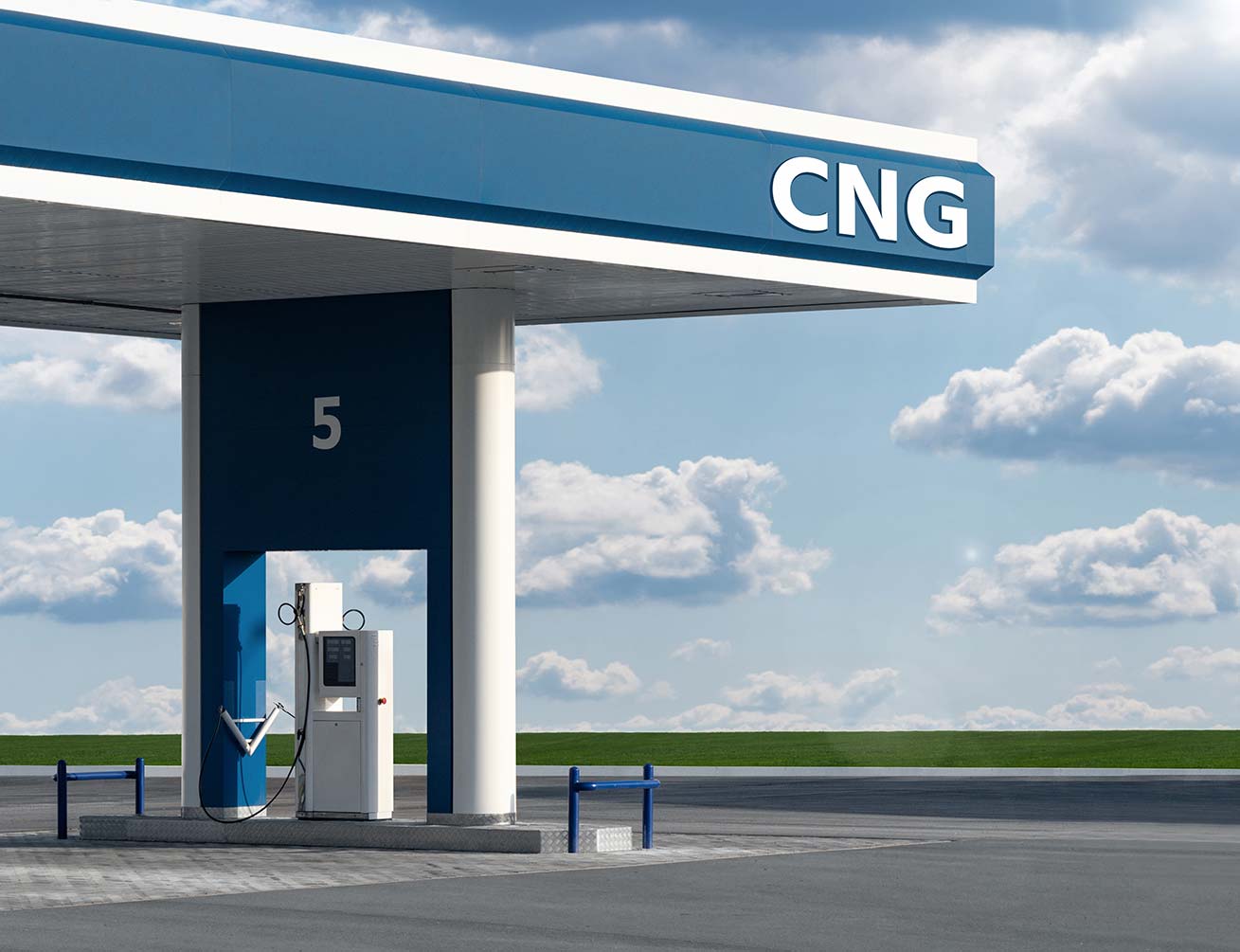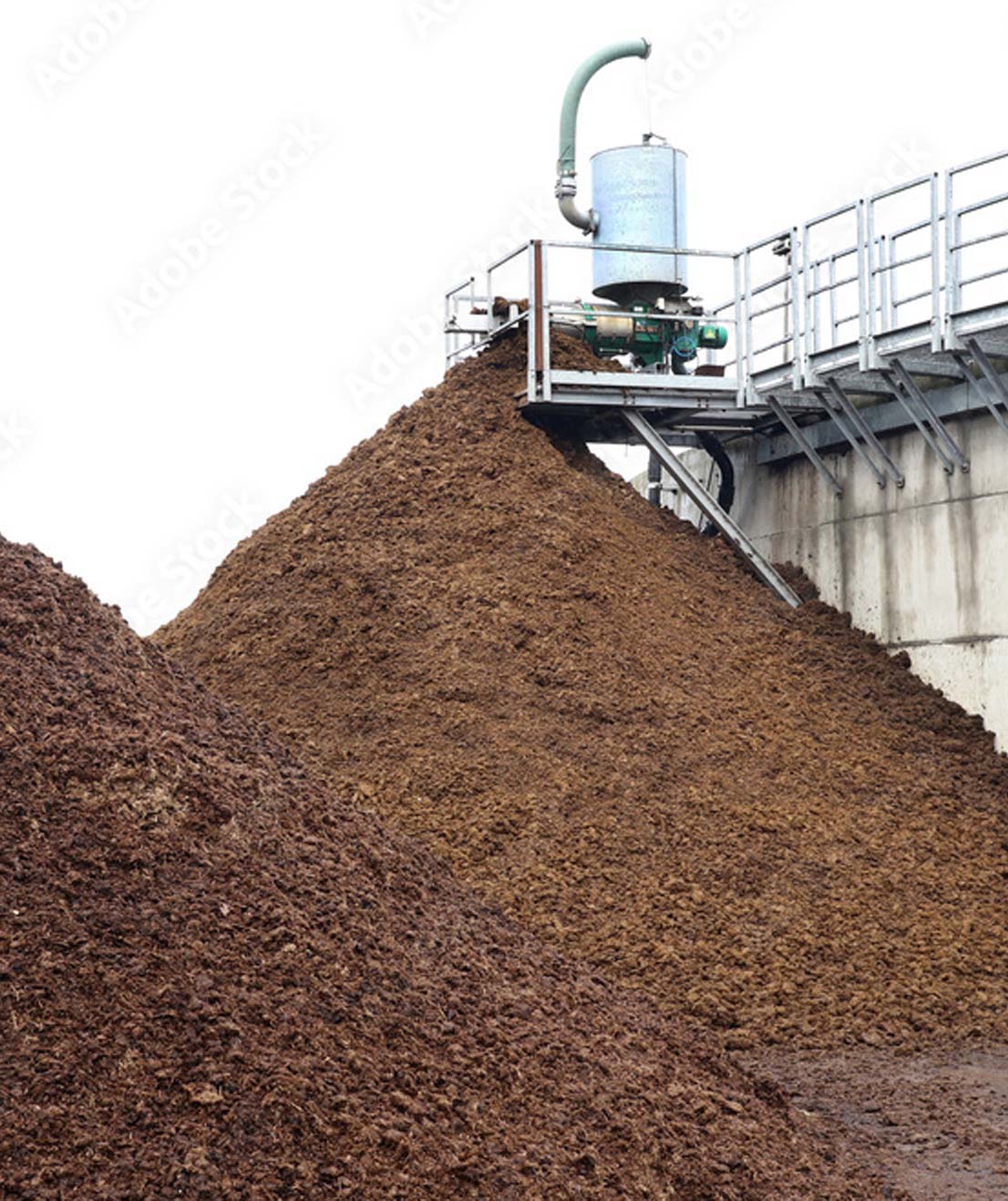
Biomethane
Biomethane is the biogas produced during the anaerobic digestion (fermentation) of organic residues (equivalent to bio natural gas), from which the carbon dioxide (CO2) has been separated.
This separation takes place, for example, in a physical scrubbing process or pressure swing adsorption (PSA).
The biomethane can then – after a pressure adjustment – be fed into and transported via the existing natural gas network.This makes it possible for this ‘green gas’ to be extracted from the natural gas grid anywhere in Europe and used in all sectors, e.g. as a renewable fuel.
Green carbon dioxide (CO2)
Carbon dioxide (CO2) is washed out during the processing of biogas to biomethane quality. revis liquefies this carbon dioxide and then sells it as a separate product.
Thanks to permanently monitored quality, this green carbon dioxide – which results from 100% organic residues – fulfils the requirements for foodstuffs.
It can therefore be used in processes in the food industry and replaces carbon dioxide previously obtained from fossil fuels. In addition to industrial utilisation, this green carbon dioxide can also be used in technical applications and for the production of renewable synthetic fuels.


Bio-LNG
LNG stands for ‘liquefied natural gas’. Bio-LNG is biomethane, which is converted into liquid form by cooling in decentralised or centralised plants. This results in a very high energy density, which enables long ranges in lorries.
There is already a dense network of filling stations for LNG refuelling throughout Europe, so that logistics companies can ideally handle long-distance transport with this climate-neutral fuel.
Bio-CNG
CNG stands for ‘compressed natural gas’. It is natural gas or, in the case of revis, biomethane, which is compressed to 200 bar at filling stations throughout Europe and can then be refuelled.
CNG is available both on the basis of natural gas and as a mixture of natural gas with biomethane and as pure biomethane gas.
Bio-CNG – which is obtained from revis biomethane made entirely from manure – has a positive carbon footprint. This means that more carbon dioxide is saved in the production of the bio-CNG fuel than is emitted through the consumption of the fuel.


Digestate
The digestate left over from the anaerobic digestion (fermentation) of farm manure for biogas production contains valuable nutrients and organic matter, such as nitrogen, phosphorus, potassium and sulphur, as well as other (micro)nutrients that are necessary for plant growth.
Revis utilises the properties of these fermentation residues to create a stand-alone product that can be used in various sectors of the economy.

